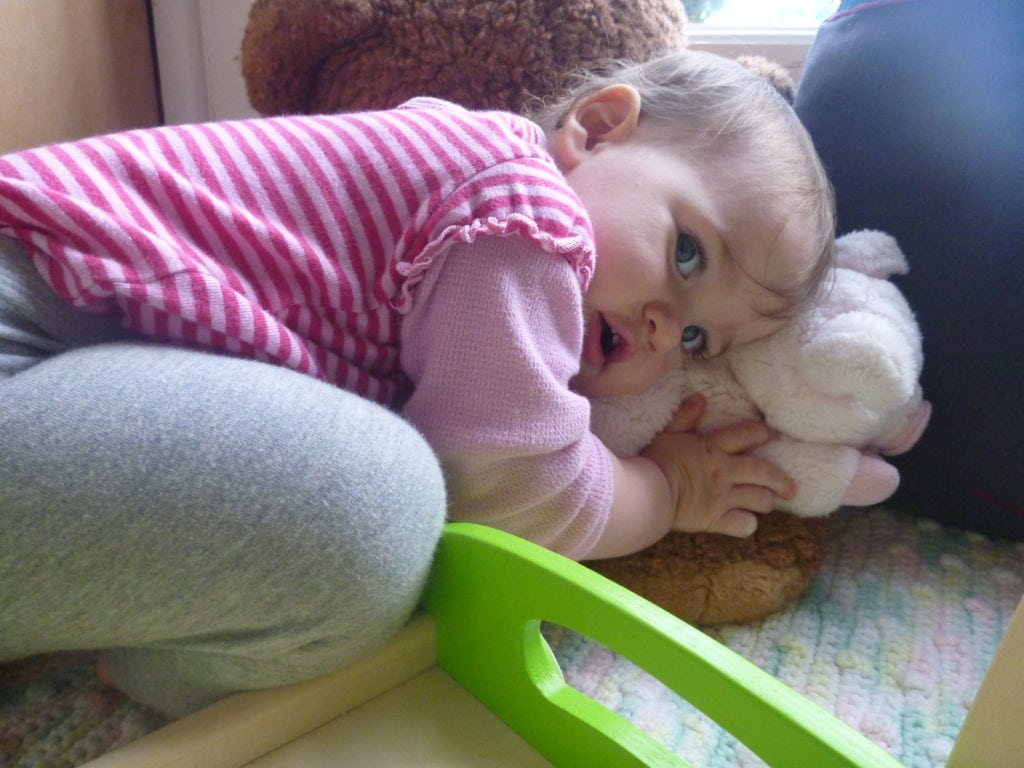Fears at Bedtime

Sometimes children develop fears surrounding bedtime, night, or darkness. While the thing they are afraid of may not make any sense to an adult, the fear is real. Once when my partner was out of town and I thought I heard a noise downstairs, I became nervous and grabbed my cell phone. My mind flooded with possible situations and I became terrified. There was no one in the house and I was safe but the fear I felt was real. If your child is having fears at bedtime we recommend telling them, “I will keep you safe.”
You can try asking them what would help them to feel better. Sometimes it is simple. When I was about six years old I developed a fear of the floral design on the lampshade in my bedroom. We turned the shade around so it was plain white and I slept without a problem. Try to make reasonable accommodations about the door, lights, or items in the child’s room. We do not recommend bringing them into your room. If your child asks you to stay with her, you can be honest with her, “I have a lot of work to do and I need my rest too, I could stay with you for 3 minutes. Would that work for you?” If she becomes upset again after you leave, go to her and say, “You are safe. I love you. Get some sleep so we have energy to play tomorrow.” Know that these fears will pass.
Offer empathy not sympathy. If your child is upset, acknowledge that and listen to her, but don’t play into her fears by chasing monsters. You might say, “It is scary sometimes when you’re going to sleep. You’re safe and I am near.” Acknowledge that the sensations of panic, tightness, and a racing heart are real, but she is safe. Sometimes talking about your plan can be ensuring, “You’re going to rest in your bed, close your eyes, and sleep until the sun comes up in the morning. Then we will play again together.”
Help your child to think about other things. It is very powerful to help your child understand her mind. You can tell her simply, “You’re thinking about a lot of scary things and now your body is feeling tense. Think about your breathing. Relax your body like a popsicle melting. Tell yourself, I’m safe and I’m resting to have energy for play tomorrow.” This is not distracting your child from being scared. This is about mindfulness. Acknowledge the fear, then accept it and move toward sleep. If you’re interested in reading more about helping your child with this, the book “Whole Brain Child” by Dr. Dan Siegel and Dr. Tina Bryson has many resources for helping children who become stuck in anxiety and fear.
Categories: Sleep
Tags:
